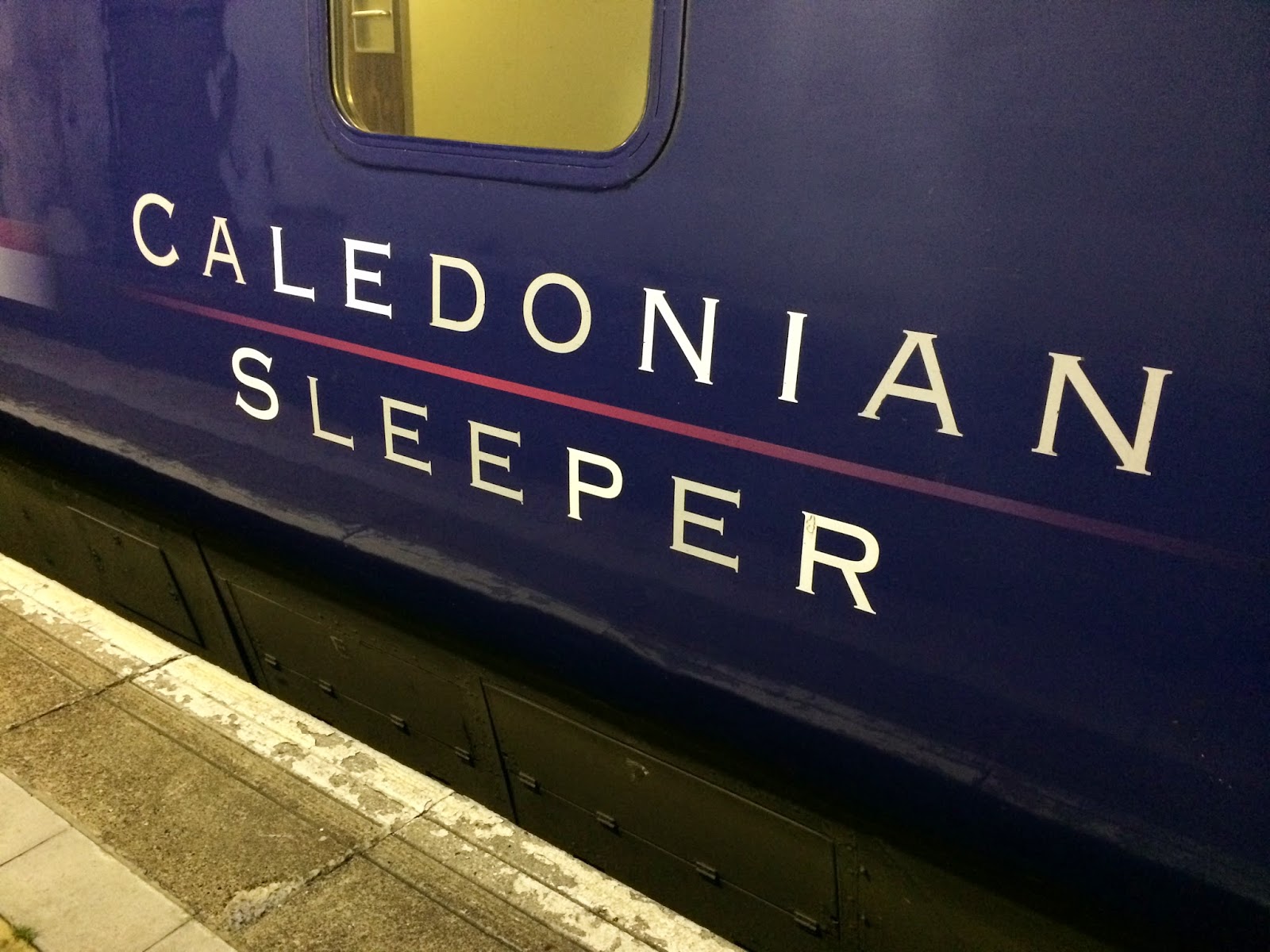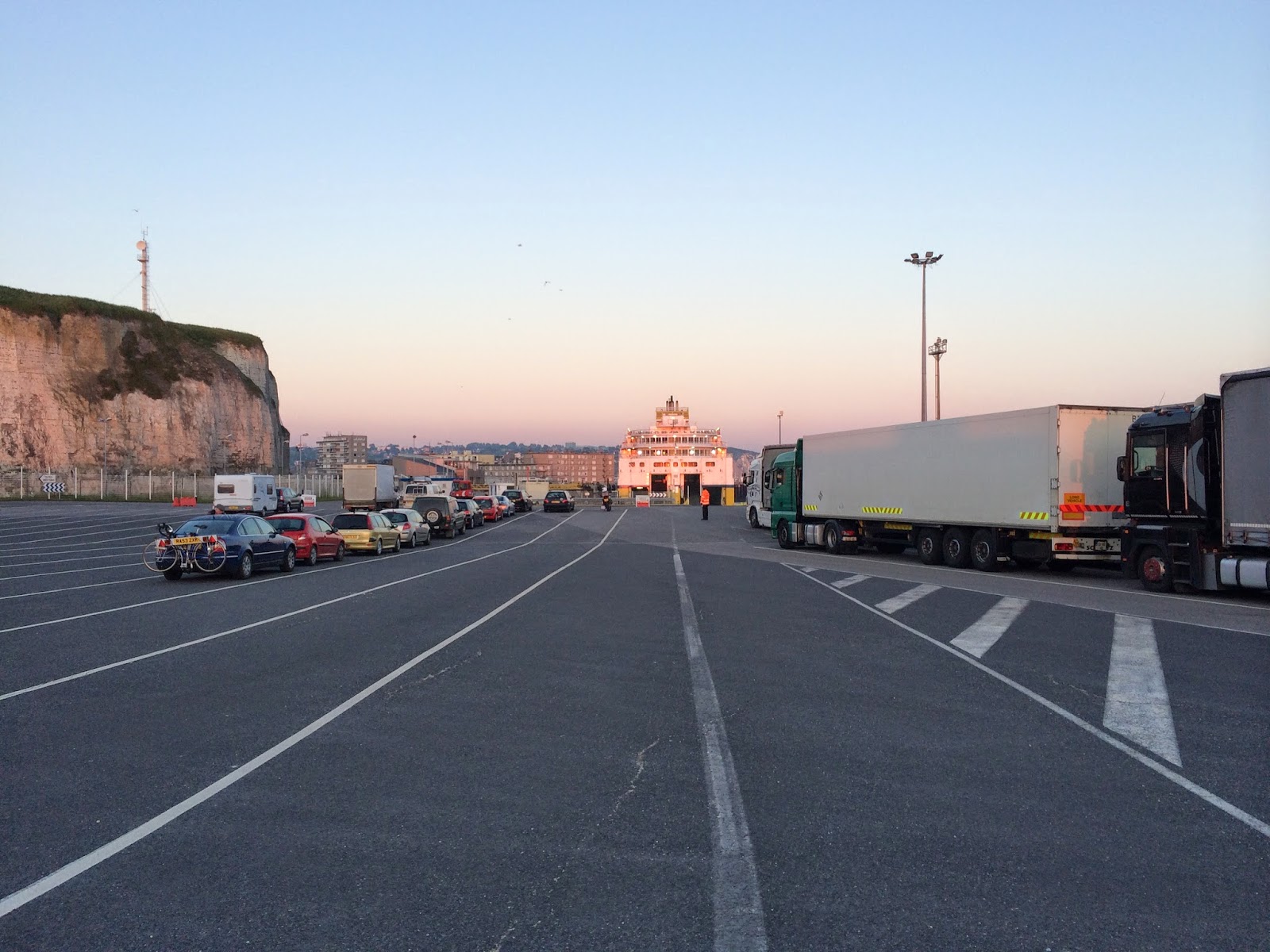I've been over to France innumerable times, via Dover, Portsmouth and the channel tunnel, but between the two is the lesser known service that runs from Newhaven to Dieppe.
Heading off for a long weekend with friends in Normandy my original plan was to use the Brittany Ferries service from Portsmouth to Ouistram, near Caen, but bike racing at Le Mans meant there was a lot of demand and no bike places left. I could have taken the car, but that would have been more expensive, and certainly not my preferred mode of holiday transport.
Previously the service has been operated by Sealink and Hoverspeed, and now is advertised as a DFDS Seaways service. That said, it appears to be suffering something of an identity crisis with the web site being LD Lines, the ship's livery Transmanche Ferries, and the signage and uniforms on board a mixture of all three.
Newhaven Harbour
Newhaven's location, roughly a third of the way between Portsmouth and Dover, is slightly awkward to get to, and from home takes me slightly longer to get there than either of the other two (3h00 for Newhaven versus 2h30 for both Portsmouth and Dover). One consolation is that the approach road from the A27 is not a bad road for a ride; but not late at night, in the dark.
The DFDS service is the only ferry operating from port, and after queuing for check-in, I was directed straight on to the boat. This made a pleasant change from being subjected to various security searches at both Portsmouth and Dover whenever I'm on the bike - but strangely never when I'm in the car. Consequently I didn't have time to explore the facilities on offer at Newhaven, although I don't recall seeing anything for vehicle passengers (or cyclists - a "cyclists forbidden" sign was prominently displayed on the terminal building) once through check-in.

Boarding the ferry, the Côte D’Albatre, I was directed to the motorbike area where the bike was strapped down for me by a deckhand. Climbing up innumerable flights of steps to the passenger accommodation I was greeted with a large bar area spread over two levels, a small self-service restaurant, and several lounges with reclining seats - more about those later. The lateness of the hour, I was on the 23.00 departure, meant few people were using either the restaurant or the bar, but I had a very acceptable ham and cheese baguette and a couple of drinks with my friends who were also travelling on that crossing.
An inviting set of steps to what looked like a full restaurant on an upper deck were roped off with no menu on display or mention of it elsewhere.
Accommodation
With a crossing time of only four hours I didn't think the expense of a cabin was worth it for the couple of hours I would be able to use it, so I opted for a reclining seat in one of the lounges. The seat was comfortable enough, but didn't recline all that far, and the lighting in the lounge wasn't dimmed for the night. I must commend the crew on their desire to maintain the cleanliness of the ship as they were vacuuming well in to the wee small hours: the sound being conveyed through the ventilation system from wherever it was they were actually cleaning.
An hour before arrival, I gave up on the idea of sleep and wondered about some breakfast. I got to the self-service restaurant just as they were opening up, with coffee and a pastry the order of the day. Quite reasonably priced too, with a decent coffee and freshly baked pain au raisin costing less than a typical UK coffee shop.
 |
| Dieppe in the early morning darkness |
We docked slightly late, but it wasn't long before we were invited to return to our vehicles. It took a bit of determined creeping on the bike to get a space amongst the lorries to disembark, but with so few private vehicles on board I was through French immigration very quickly and heading west.
Like Newhaven, Dieppe is not on the main road network and some navigation is required to reach the Autoroute. Despite being the early hours, there was a fair bit of traffic on the road - most of it probably off the same ferry as I was!
Return Journey
A more civilised time for the return crossing was 07.30, but this still meant I was on the road at 03.30 to get there in time. I'd left plenty of time for the journey, and there was no queue for check-in this time when I arrived at 06.00. I ended up at the front of the queue, and was treated to a lovely sunrise. The only facilities I could find were some distance from the boarding lanes, back beside check-in, and even those were just (clean and well maintained) toilets.
Boarding commenced at 06.30, but the motorbikes were almost last to board as the allocated space for them is at the back of the boat (the boat berths stern-in at Dieppe; bow-in at Newhaven). If it had been cold or wet, it would not have been a pleasent experience as there is no shelter provided.
Tucking the bike in to place took a bit of shuffling, and on a wet vehicle deck there wasn't a lot of grip available. I was paddling backwards, but clearly not quickly enough for the deckhand who tried 'help' by pushing the bike with me astride it. A lack of grip meant that I nearly lost my footing and would have fallen over and dropped the bike. Fortunately it didn't happen, but a little patience on the part of the deck crew would have been appreciated - especially as I then had to stand there for several minutes while a strap was found to secure the bike.
Upstairs, once again the boat was fairly quiet with plenty of room in the bar area. Given the time of day, it seemed plenty of people were looking for breakfast and the café was busy with a long queue that just didn't move.
It appears the self-service restaurant is something of an after-thought, and the serving area is crammed in behind glass screens leaving little spare room to manoeuvre. Even the layout of the food within it is not particularly logical: having selected your full-English breakfast and deciding you would like a slice of toast, you discover that you should have picked up a slice of bread (plus your cutlery) as you entered instead of waiting until you get to the toaster. And given the limited space, you make a nuisance of yourself trying to squeeze past other customers to get your bread.
The breakfast selection was fairly limited, which is why I'm not sure as to the reason it took so long to get served. I assumed they must be cooking each breakfast to order, but no, the bacon, sausages, eggs etc. were all laid out on the hot counter. It took over twenty minutes to work my through and buy a cup of coffee and a pastry.
As on the outward crossing, what I assume to be the main restaurant remained closed.
After a snooze in the reclining seats, I adjourned to the bar for a mid-morning snack. The bar was doing a steady trade, but the adjacent shop remained closed for almost the entire crossing. The display cases around the shop looked a little forlorn with a few products displayed without any real attempt at window-dressing or promotion. The selection in the shop was adequate with the usual alcohol and tobacco available plus toys and travel accessories, although the prices did not seem all that attractive compared to the UK high street.

We were blessed with another smooth crossing and a warm day, so the ample outside deck space was appreciated with plenty of space to sit on the chairs, or lean on the railings watching the world go by. The crew obviously take a degree of pride in the appearance of the ship as the decks on one side were being enthusiastically hosed-down, and on the other side a generous coat of white paint was being applied to a wall. Inside, the barman was polishing the floor between serving customers.
After an uneventful crossing we made our way, very carefully, in to Newhaven. In the darkness on the outward trip I hadn't appreciated just how tight the harbour is, but we were stirring up the sand as we crept up the channel to the berth.
With the bike parked at the back of the car deck, it took a while before we were able to disembark but UK immigration was quick enough and it wasn't long before we were joining the traffic jam to leave the port (there's a complicated series of mini-roundabouts, multi-lane junctions and a level crossing to contend with immediately outside).
Summary
Overall I was impressed with the service: The boat was clean, comfortable and the food was good.
What was less impressive was the slightly dismissive attitude of the crew: not rude, but lacking in any spark or enthusiasm and giving 'just enough'.
I'm also a little concerned that the public address system was exceptionally poor. I could hear announcements being made, but they were so unclear as to be impossible to understand in either French or English. I didn't hear a safety announcement on departure from either port, nor any announcements regarding the shop or returning to the car deck at the end of the crossing; in the latter case I loitered near the stairs until the crew member stationed there unclipped the tape across them.
Were there to have been an emergency on board then I suspect things could have got very difficult for both passengers and crew.
Would I use the service again? Yes, I would - but at a more favourable departure time than the overnight, and I would stay closer to the port for the early morning departure.
Ratings for the Côte D’Albatre
Value: 5/5
Service: 3/5
Food: 4/5
Facilities: 3/5


















